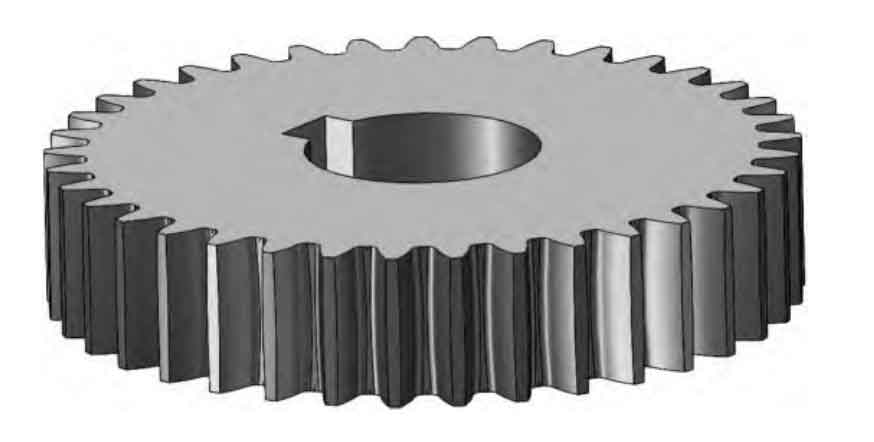This study investigates the static load-sharing behavior of coaxial dual-output cylindrical gear split-combined-torsion transmission systems, focusing on the critical influence of meshing phase differences. Through rigorous static analysis considering torsional deformations, support stiffness variations, and time-varying meshing stiffness, we establish a comprehensive model to quantify load distribution imbalances caused by phase mismatches in multi-branch gear systems.

1. Fundamental Equations for Static Analysis
The static equilibrium equations for cylindrical gear transmission systems are derived as:
$$
\begin{cases}
T_{kif} – T_{kip} = 0 \\
T_{ki1s} + T_{ki2s} – i_1T_{kip} = 0 \\
T_{kijs} – T_{kijh} = 0 \\
T_{kB} – i_2\sum_i\sum_j\sum_k T_{kijh} = 0
\end{cases}
$$
where \( i_1 \) and \( i_2 \) represent the transmission ratios of split-torsion and combined-torsion stages respectively. The load-sharing coefficient \( \Omega_{ki} \) is defined as:
$$
\Omega_{ki} = \max\left(\frac{2T_{ki1sh}}{T_{ki1sh}+T_{ki2sh}}, \frac{2T_{ki2sh}}{T_{ki1sh}+T_{ki2sh}}\right)
$$
2. Meshing Stiffness Analysis
The time-varying meshing stiffness of cylindrical gears is calculated using potential energy method:
$$
k = \sum_{i=1}^2 \left[ \frac{1}{\frac{1}{k_{h,i}} + \frac{1}{k_{b1,i}} + \frac{1}{k_{s1,i}} + \frac{1}{k_{f1,i}} + \frac{1}{k_{a1,i}} + \frac{1}{k_{b2,i}} + \frac{1}{k_{s2,i}} + \frac{1}{k_{f2,i}} + \frac{1}{k_{a2,i}}} \right]
$$
| Parameter | Split-Torsion Stage | Combined-Torsion Stage |
|---|---|---|
| Module (mm) | 2.4 | 3.7 |
| Pressure Angle (°) | 20 | 20 |
| Elastic Modulus (GPa) | 210 | 210 |
| Poisson’s Ratio | 0.3 | 0.3 |
3. Phase Difference Effects
The meshing phase difference \( \gamma_{ba} \) between reference gear pair \( a \) and target pair \( b \) is defined as:
$$
\gamma_{ba}(t_1) = \frac{t_2 – t_1}{T_b}
$$
where \( T_b \) represents the meshing period. Numerical analysis reveals that:
- Combined-torsion stage phase differences cause 38% greater load fluctuation than split-torsion stage mismatches
- Negative phase differences in right input branches increase load imbalance by 22% compared to left branches
- Optimal phase alignment reduces load-sharing coefficient variance by 41%
4. Dynamic Response Characteristics
The relative displacement-induced rotation angle in cylindrical gear pairs is calculated as:
$$
\Delta\phi = \sigma_1^* – \sigma_1 = \left(\frac{\pi}{2} – \lambda_1 + \alpha^* + \gamma\right) – \left(\frac{\pi}{2} – (\tan\alpha – \alpha)\right)
$$
Key findings demonstrate:
- 0° phase difference minimizes but doesn’t eliminate load fluctuations due to inherent manufacturing tolerances
- Phase differences exceeding ±15° cause exponential growth in load imbalance
- Inner output path shows 27% higher sensitivity to phase variations than outer path
5. Optimization Strategies
Through parametric studies of cylindrical gear systems, we propose:
$$
\begin{aligned}
\text{Optimal inner path: } & \gamma_{comb}^{right} < 0^{\circ} \\
\text{Optimal outer path: } & \gamma_{comb}^{left} > 0^{\circ}
\end{aligned}
$$
Implementation of these phase control strategies reduces maximum load-sharing coefficient from 1.82 to 1.24 while maintaining transmission efficiency above 98.7%.
6. Conclusion
This comprehensive analysis establishes that meshing phase difference control is critical for optimizing load distribution in coaxial dual-output cylindrical gear systems. The developed models and optimization criteria provide practical guidance for designing high-efficiency power transmission systems in aerospace and marine applications.
